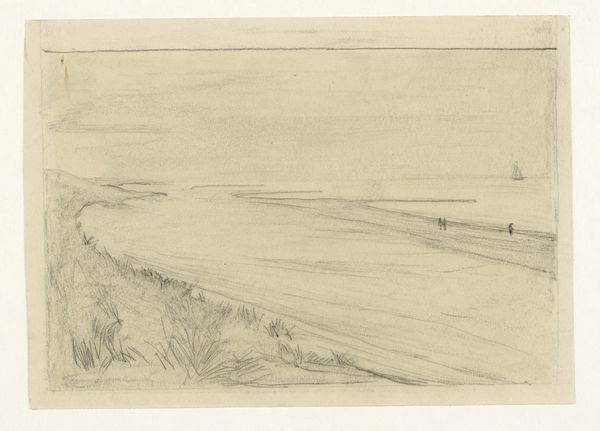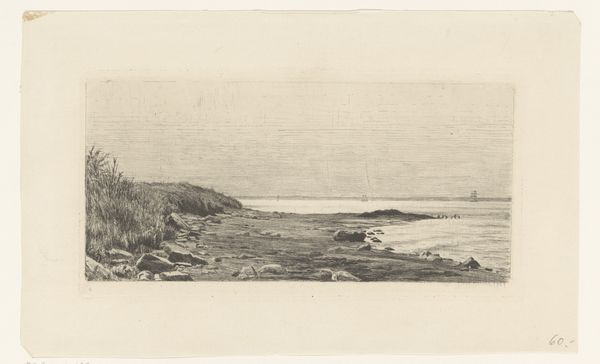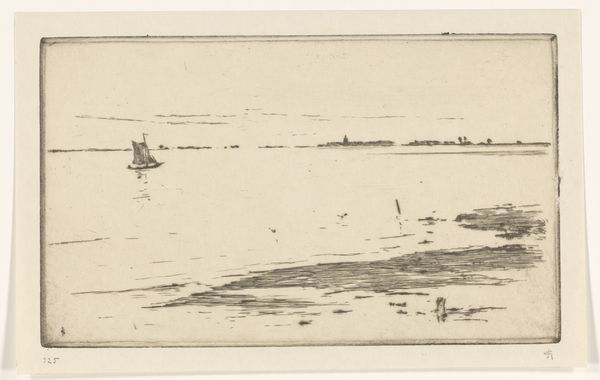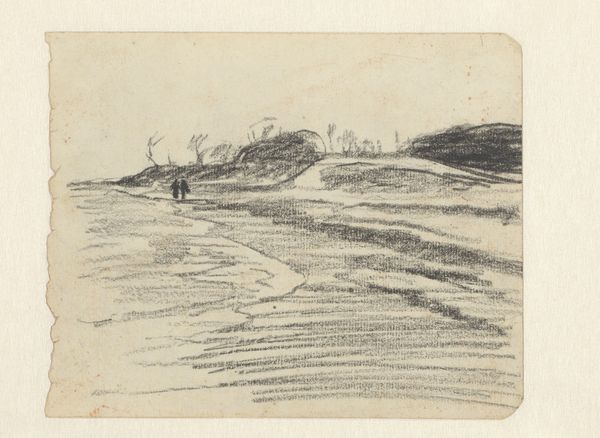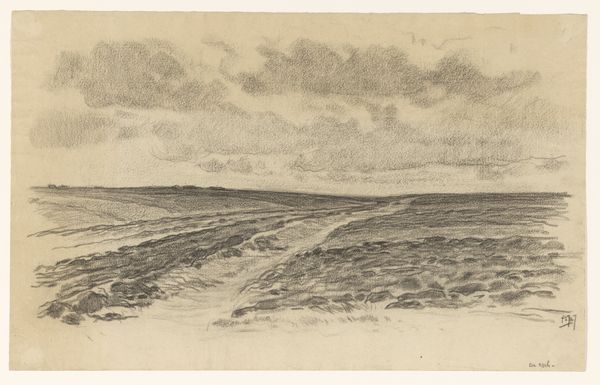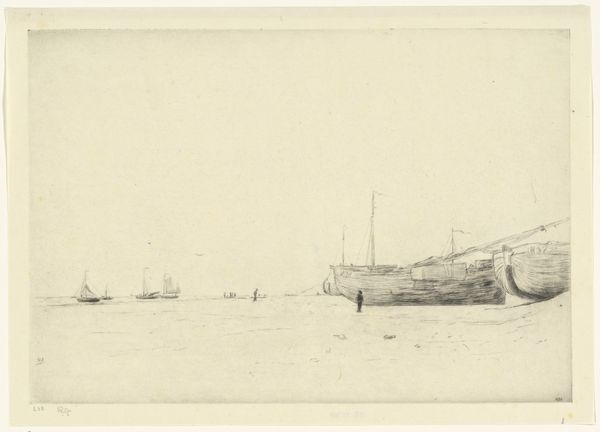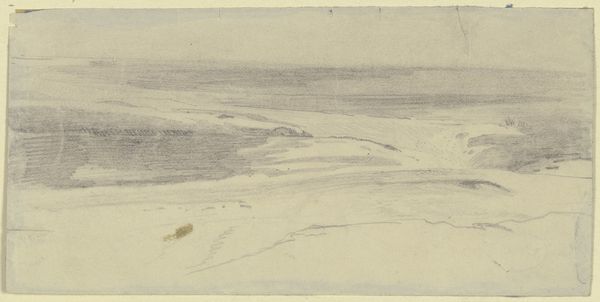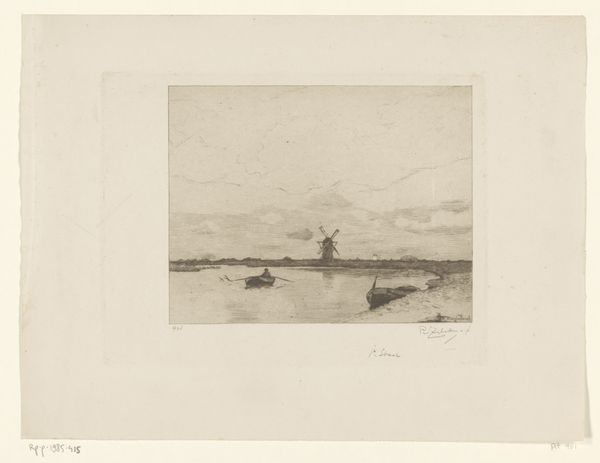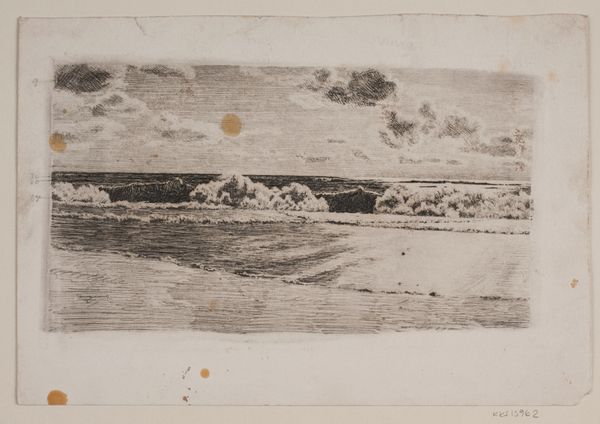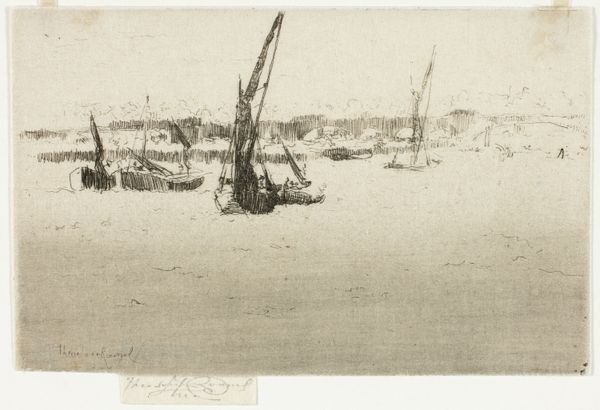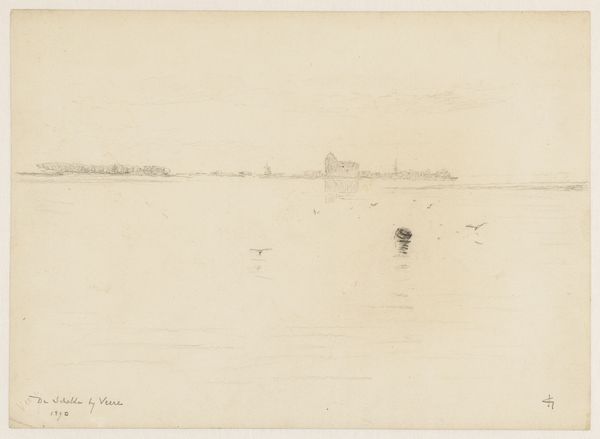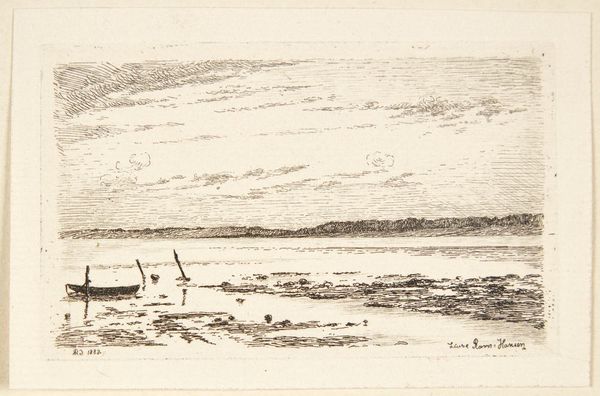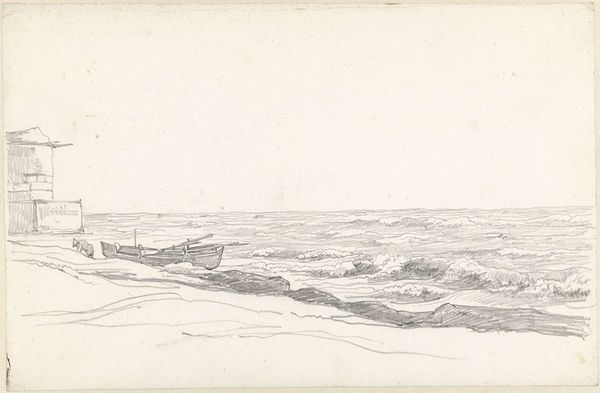
print, etching
# print
#
etching
#
landscape
#
realism
Dimensions: height 110 mm, width 213 mm
Copyright: Rijks Museum: Open Domain
Curator: At first glance, this Carl Bloch etching titled "Duin aan zee", or "Dune by the Sea", appears to depict a very quiet landscape, rendered in a highly detailed and realistic style. Editor: It does feel rather muted, almost melancholy. The fine lines create this sense of distance, a hazy, perhaps cold, atmosphere along the shore. It invites introspection. Is that some sort of fossil fuel or possible pollutant on the upper portion of the print? I wonder about contemporary issues affecting the waterways during this time. Curator: Well, it could merely be a flaw in the paper's aging. The work dates back to 1884 and is quite in line with the Realist movement’s interest in portraying unidealized, everyday scenes, devoid of overtly romantic undertones. The focus is less on high drama and more on capturing a specific locale with accuracy. Editor: But even everyday scenes carry loaded signifiers, don't they? Look at those distant ships; they are not merely props. What relationship might Denmark have with oceanic trade and resource extraction during this period? The details are meticulously rendered, and I agree that the choice to etch this particular view certainly grounds it in Realism's approach. Yet there is something inherently political about that choice of subject matter itself. Who has access to the sea, and whose lives depend on it? Curator: Yes, the sea indeed evokes different resonances—voyages, the unknown, and the origin of life itself—as an enduring symbol within diverse belief systems and art forms, reflecting both potential and inherent risks. In European folklore, shorelines often act as transitional spaces, not strictly part of the human-inhabited land, hinting at concealed realms that stir a sense of collective cultural intrigue. Editor: I think situating this landscape within its historical context unveils tensions between land and sea, inviting us to investigate socio-economic dynamics. A seemingly serene etching reveals a layered history marked by trade and exploitation, forcing us to reconsider nature's neutrality in art. Curator: Fascinating how symbols shift across time. Even simple scenes ripple with deeper resonances. Editor: Absolutely. We cannot help but see art through the lenses of our lived experiences, do we?
Comments
No comments
Be the first to comment and join the conversation on the ultimate creative platform.
